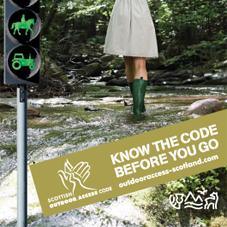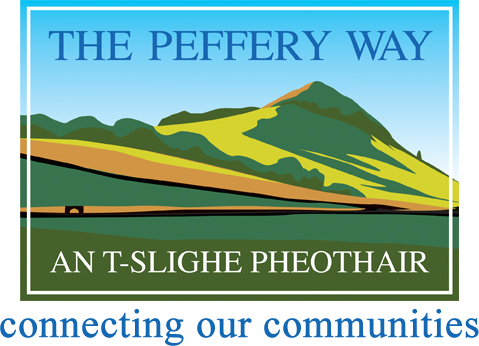 The Peffery Way falls under the Scottish Outdoor Access Code which entitles the public to use the land for various pastimes. There are particular aspects of the Peffery Way that are sensitive due to landowner/livestock grazing issues and we would request that all users take extra care when accessing these areas. It is vital that users walk in a slow and calm manner when passing grazing sheep on or next to the path and that all dogs are kept under control to avoid frightening the livestock.
The Peffery Way falls under the Scottish Outdoor Access Code which entitles the public to use the land for various pastimes. There are particular aspects of the Peffery Way that are sensitive due to landowner/livestock grazing issues and we would request that all users take extra care when accessing these areas. It is vital that users walk in a slow and calm manner when passing grazing sheep on or next to the path and that all dogs are kept under control to avoid frightening the livestock.
Please read the guidelines below and familiarise yourself with the current legal rights and responsibilities of users.
The Scottish Outdoor access code http://www.outdooraccess-scotland.com/ outlines responsible access rights as;
Access rights extend to all paths and tracks except where they go over land on which access rights do not apply. Rights of way are unaffected by the legislation. Access rights apply off-path, but when you are close to houses or in fields of crops or in places where the environment is particularly vulnerable to damage, it may be sensible to follow paths and tracks where they exist. This can help to facilitate access and help safeguard the interests of land managers and the environment.
You can exercise access rights for:
- recreational purposes (such as pastimes, family and social activities, and more active pursuits like horse riding, cycling, wild camping and taking part in events)
- educational purposes (concerned with furthering a person’s understanding of the natural and cultural heritage)
- some commercial purposes (where the activities are the same as those done by the general public), and
- for crossing over land or water.
- The three key principles of the Code are:
- Respect the interests of other people
- Care for the environment
- Take responsibility for your own actionsAccess rights extend to fields with farm animals, but remember that some animals, particularly cows with calves but also horses, pigs and farmed deer, can react aggressively towards people. Before entering a field, check to see what alternatives there are. If you are in a field of farm animals, keep a safe distance and watch them carefully. When crossing fields with young animals present, you can avoid disturbing sheep close to lambing time, or young animals such as calves, lambs, foals and farmed deer, by going into a neighbouring field or onto adjacent land. If this is not possible, keep as far from the animals as possible. Do not take dogs into fields where there are young animals present.If walking with a dog access rights apply to people walking dogs as long as their dogs are kept under proper control.The Access Code says:
- Your main responsibilities are:
- Farm animals:
- Never let your dog worry or attack farm animals.
- Don’t take your dog into fields where there are lambs, calves or other young farm animals.
- If you go into a field of farm animals, keep your dog(s) on a short lead or under close control and keep as far as possible from the animals.
- If cattle react aggressively and move towards you, keep calm, let the dog go and take the shortest, safest route out of the field
- Crops:
- Don’t take your dog into fields of vegetables or fruit unless there is a clear path, such as a core path or right of way, and keep your dog to the path.
- Ground nesting birds:
- During the breeding season (usually April-July) keep your dog on a short lead or close at heel in areas such as moorland, forests, grasslands, loch shores and the sea shore to avoid disturbing birds that nest on or near the ground.
- Recreation areas and public places:
- avoid causing concern to others by keeping your dog close at heel or on a short lead.
- Dog waste:
- Pick up and remove your dog’s faeces if it defecates in a public open place.
- See the leaflet aimed at dog owners http://www.outdooraccess-scotland.com/sites/default/files//docs/dog_owners_leaflet.pdf
- Pick up and remove your dog’s faeces if it defecates in a public open place.
- Farm animals:


